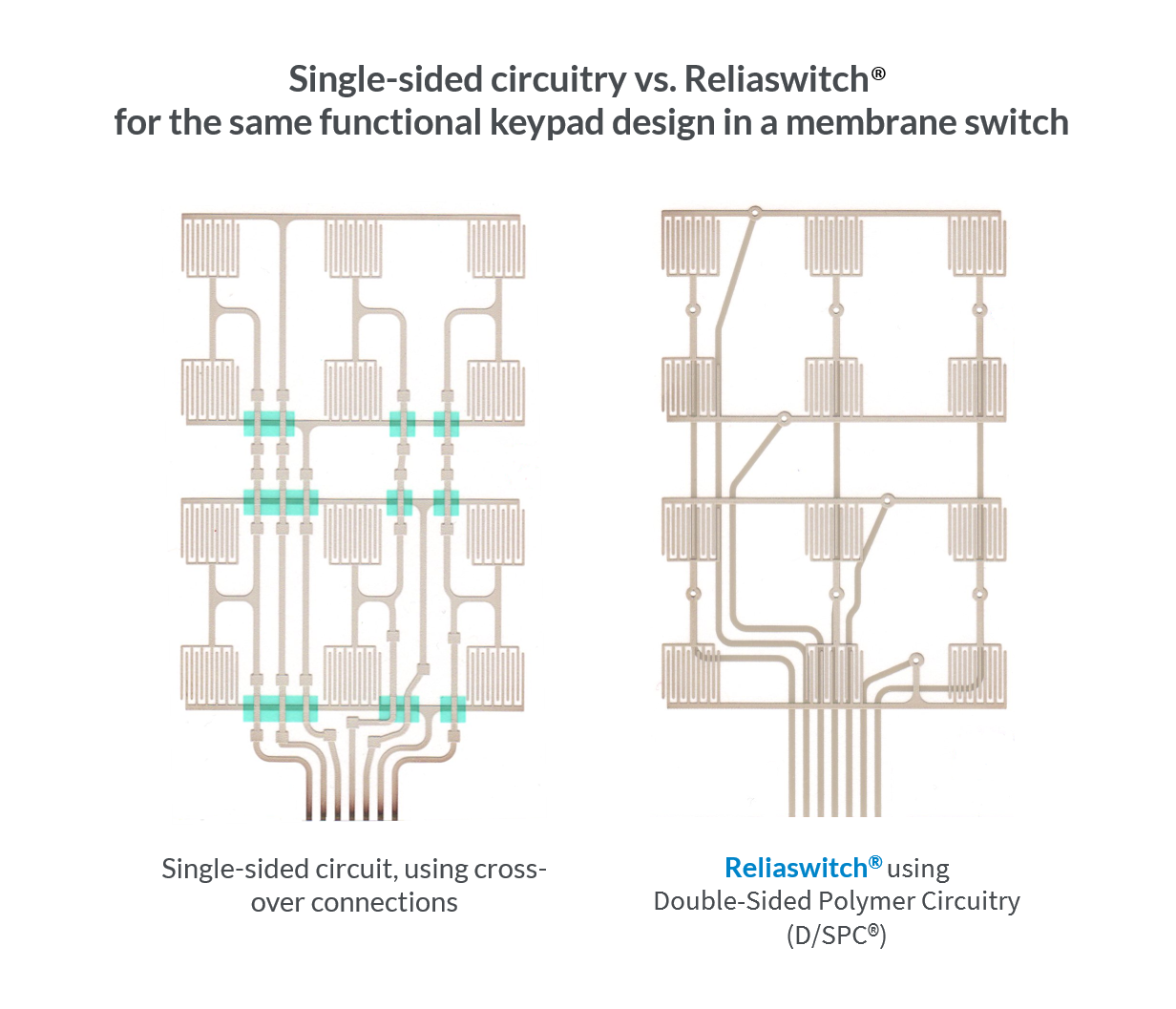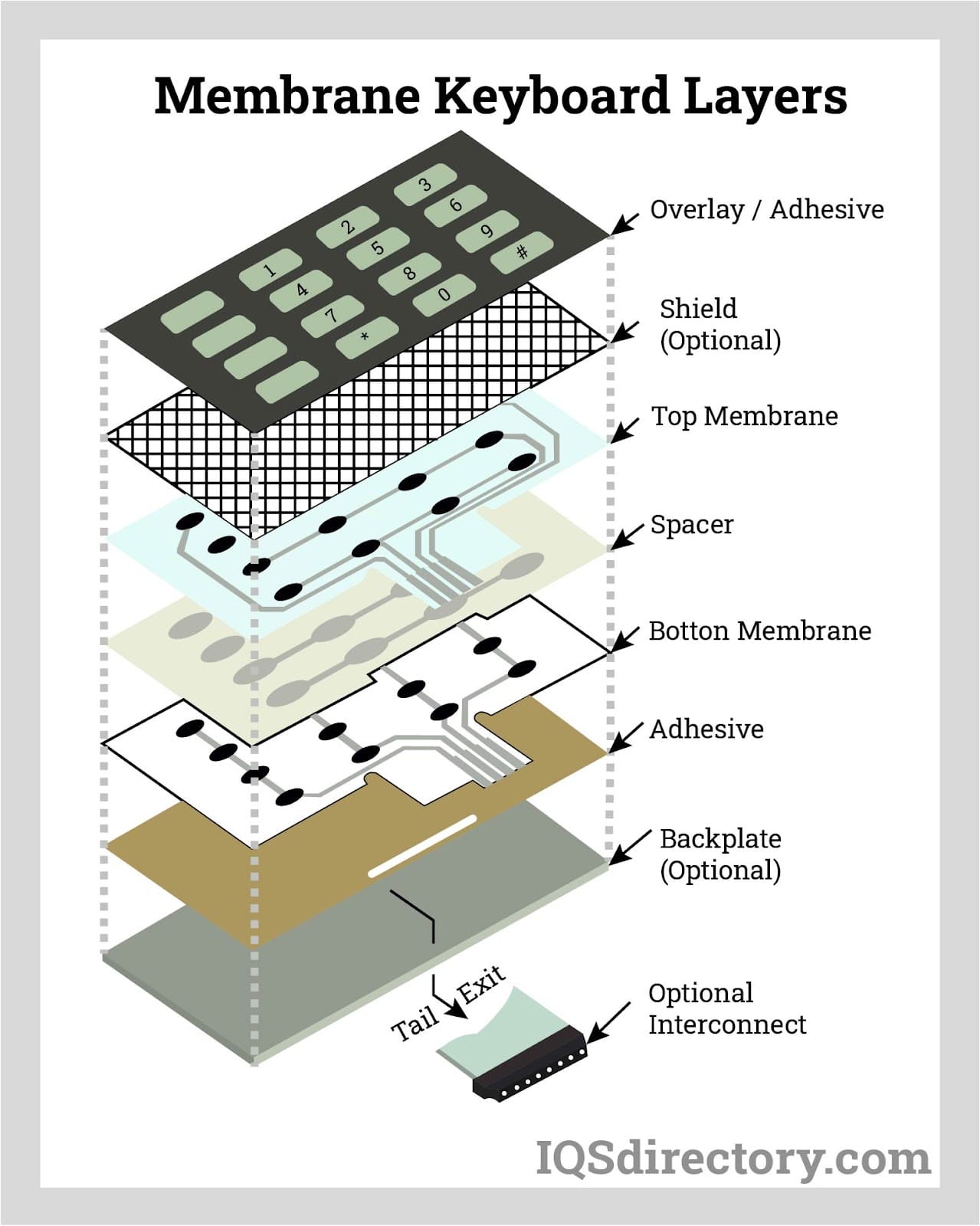The Manufacturing Refine Behind Membrane Switch: What You Required to Know
The production process behind membrane switches combines cautious layout, material selection, and quality control. It starts with understanding the details of membrane button style and advances with various phases, consisting of product choices and printing methods. Each stage plays a necessary duty in making certain functionality and sturdiness. Nevertheless, the complexities of layer building and the extensive screening requirements might disclose understandings that are not promptly obvious. What lies beyond these foundational components?
Comprehending Membrane Layer Change Design
Although membrane layer switches might appear easy in the beginning glimpse, their design involves complex factors to consider that assure functionality and toughness. The layout process begins with a thorough understanding of individual needs, consisting of the interface's intended application and environmental variables. Comfort designs is an essential element, as the format needs to help with ease of use while making sure that tactile feedback meets customer expectations.Moreover, the layering of components, such as graphic overlays, sticky layers, and conductive traces, should be exactly engineered. membrane switch. This split configuration not only affects the button's responsiveness but likewise affects its longevity. Focus is provided to the sealing strategies used to shield against moisture and dirt, which might compromise efficiency. In addition, design factors to consider include aesthetic appeals, where color schemes and aesthetic quality improve user experience. Inevitably, the design of membrane layer switches over equilibriums functionality, user experience, and resilience, ensuring that they satisfy the demands of numerous applications successfully
Products Used in Membrane Layer Switch Manufacturing
When selecting materials for membrane switch production, it is vital to contemplate both performance and sturdiness. The main materials consist of polyester and polycarbonate films, which supply adaptability and strength. These movies are frequently covered with sticky to assure proper bonding to substrates. Conductive inks, usually composed of silver or carbon, are critical for creating electrical links within the button, enabling reputable operation.Additionally, a safety layer, such as a tough coat, is regularly related to boost scratch resistance and durability. The choice of backing product, such as acrylic or foam, can considerably influence the switch's responsive feel and general customer experience. Different environmental factors, including temperature and moisture, should direct product option to assure peak efficiency in particular applications. Ultimately, the best combination of materials adds to the membrane switch's capability and life-span, making educated selections important for suppliers.
The Printing Refine: Creating Graphics and Text
The printing procedure in membrane switch production plays a significant role in generating premium graphics and message. Different visuals style strategies are used to ensure visual allure and performance, while cautious ink choice approaches are important for resilience and efficiency. Comprehending these aspects is essential for achieving finest lead to membrane layer switch design.
Graphic Style Techniques
Graphic layout methods play a vital duty in the printing process of membrane switches, as they specify just how graphics and message will inevitably appear on the final item. Reliable visuals layout involves the critical use designs, shades, and typefaces to improve readability and visual allure. Developers typically use vector graphics for scalability, ensuring that pictures remain sharp at various sizes. Additionally, attention to comparison and alignment is essential, as it affects individual interaction and aesthetic quality. The incorporation of branding elements, such as logo designs, should be taken care of with like keep brand name stability. Overall, thoughtful graphic style methods contribute considerably to the performance and attractiveness of membrane layer switches, affecting individual experience and product performance.
Ink Selection Methods
Picking the ideal ink is necessary for accomplishing the preferred aesthetic high quality and sturdiness in membrane layer switch manufacturing. Different ink kinds are used, consisting of solvent-based, water-based, and UV-curable inks. Each kind uses unique qualities, such as resistance, attachment, and versatility to environmental aspects. Solvent-based inks are often preferred for their durability and vibrant colors, while water-based inks are a lot more eco pleasant yet might have restrictions in bond. UV-curable inks give quick curing and durable performance. In addition, shade matching strategies assure that the selected inks line up with design specs. Eventually, the option of ink have to consider factors such as application method, substrate compatibility, and end-use needs to accomplish premium outcomes in membrane layer button graphics and text.
Layer Construction and Setting Up

Product Option Refine
A careful choice of products is important in the production process of membrane layer buttons, as it directly affects capability and sturdiness. The main materials utilized include polyester, polycarbonate, and various conductive inks. Polyester is typically preferred for its outstanding resistance to chemicals and abrasion, making it ideal for rough environments. Polycarbonate, on the other hand, supplies exceptional clarity and effect resistance, which is helpful for applications calling for presence and toughness. Conductive inks, usually made up of silver or carbon, are crucial for producing dependable electric pathways. Furthermore, the option of sticky products affects the general honesty of the switch - membrane switch. Evaluating variables such as environmental exposure, responsive feedback, and aesthetic needs overviews manufacturers in selecting the very best products for their certain applications
Layer Bond Techniques
Sticking layers in membrane layer switch building is an important process that guarantees functionality and longevity. Different adhesion techniques are employed to secure optimal bonding in between layers, which normally include the use of adhesives, warm, and stress. Pressure-sensitive adhesives (PSAs) are frequently used for their ease of application and prompt bonding capabilities. In addition, thermal bonding strategies can be used, where warmth is used to trigger glue buildings, protecting a solid bond. The option of adhesion approach More about the author mostly relies on the products entailed and the details application needs of the membrane layer switch. Appropriate positioning and uniform application of adhesives are essential to protect against flaws, safeguarding the button operates successfully throughout its desired life expectancy.
Quality Assurance Procedures
Ensuring quality assurance during the layer building and assembly of membrane buttons is vital for preserving browse around this site efficiency and dependability. This procedure usually entails numerous important measures, consisting of thorough assessments at each phase of production. Suppliers use sophisticated screening approaches, such as peel tests and bond assessments, to confirm the stability of layer bonds. Furthermore, visual examinations are performed to identify any kind of flaws in printing or product inconsistencies. Ecological problems, such as temperature level and moisture, are thoroughly monitored to ensure perfect healing and bond. Regular calibration of tools helps maintain specific production requirements. By carrying out these top quality control steps, makers can substantially minimize the danger of product failure, guaranteeing that the final membrane layer changes fulfill the required specifications and customer assumptions.
Examining and Quality Control Steps

Developments in Membrane Layer Switch Technology
As advancements in innovation continue to advance, membrane switches are profiting from cutting-edge advancements that enhance their capability and user experience. One significant advancement is the combination of capacitive touch technology, which enables more receptive and instinctive interface. This change not only enhances appearances but likewise minimizes mechanical wear and tear, prolonging the lifespan of the switches.Additionally, developments in visuals overlay materials have resulted news in boosted longevity and resistance to ecological factors such as moisture and UV light. These products currently provide improved quality and illumination, additional boosting the aesthetic appeal.Furthermore, the unification of clever technology is transforming membrane layer switches into interactive control board, making it possible for connection with IoT gadgets. This connectivity cultivates a smooth customer experience, leading the way for applications in numerous markets, from health care to customer electronics. Collectively, these technologies setting membrane layer switches over as crucial elements in modern-day gadget design.
Regularly Asked Inquiries
For how long Does the Membrane Layer Change Manufacturing Process Take?
The period of the membrane switch manufacturing process can differ considerably. Elements such as complexity, products made use of, and production volume impact timelines, with typical manufacturing varying from a few days to several weeks for conclusion.
What Are the Common Applications for Membrane Switches?
Membrane layer switches are typically made use of in various industries, including automobile controls, house appliances, medical devices, and consumer electronic devices (membrane switch). Their versatility and resilience make them suitable for applications needing easy to use user interfaces and reputable efficiency in diverse atmospheres
Can Membrane Switches Over Be Customized for Certain Requirements?

What Is the Life-span of a Common Membrane Switch?
The life expectancy of a typical membrane switch varies, however normally, it varies from 1 to 5 million cycles. Variables such as usage, environment, and material quality substantially influence durability and total performance gradually.

Are Membrane Switches Eco-friendly?
The environmental friendliness of membrane layer switches over varies. Some materials made use of may not be recyclable, while others can be eco-friendly. The overall impact relies on making techniques and products, requiring mindful consideration throughout selection and disposal. The manufacturing procedure behind membrane switches over combines careful design, material selection, and top quality control. It starts with recognizing the intricacies of membrane layer switch style and proceeds via different phases, including material choices and printing strategies. When picking products for membrane switch manufacturing, it is crucial to contemplate both performance and sturdiness. A cautious option of materials is vital in the production procedure of membrane switches, as it straight affects functionality and toughness. The option of attachment approach mainly depends on the products entailed and the details application requirements of the membrane layer switch.